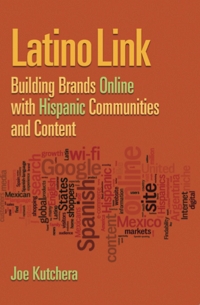This article originally appeared on MediaPost and is an early preview of Latino Link: Building brands online with Hispanic communities and content from Paramount Books.
What would you imagine the “top indexing sites reaching U.S. Hispanics 18+ who prefer Spanish” on comScore to look like? U.S. Hispanic media companies like Univision, Telemundo, Yahoo! en Español, ImpreMedia and AOL Latino, would dominate the list, right? Take a look at the top 10 indexing sites here from December 2008:
1. Weblogs SL Sites: Blog network with 30 sites based in Spain
2. Mundoanuncio: Classifieds site based in New York that serves Mexico, Argentina, and Guatemala
3. Adam4Adam.com: Gay men’s site
4. MercadoLibre: Auction site serving nearly every country in Latin America owned by eBay
5. ParaChatPro.com: Chat provider, based in California, that powers e-commerce sites and content sites like Univision.com
6. Musica.com: A music site based in Spain
7. Grupo Prisa: Owner of El Pais, based in Spain, the largest Spanish-language newspaper in the world
8. IT&IS Siglo XXI: Network of four travel sites based in Spain
9. Grupo Salinas: Owner of TV Azteca properties, based in Mexico City, with a presence in the U.S.
10. El Tiempo: Newspaper based in Colombia
Seven out of the ten are non-U.S. properties owned by Spanish, Mexican or Colombian based media companies. And two of the U.S.-based Web properties, while based in the U.S., serve Latin American or global markets. Huh? So what does this say about how we provide content and market to U.S. Hispanics?
Clearly, search has been the game changer in the “distribution” of media. Type in “viajes en latinoamerica” into your favorite search engine and you will be whisked away to a site based in Spain without even knowing that you’ve already left the country! And, according to the list above, the same is true of technology, classifieds, shopping/auction, music, news and celebrity content. Thomas Friedman was right, the world is flat.
Secondly, are U.S. based Spanish-language media companies providing (or, more accurately, not providing) the content that U.S. Hispanics seek? Evidently, U.S. Hispanics who prefer to read in Spanish leave our borders via search to read foreign sites for many niche subjects. Univision, Telemundo, Yahoo en español, Terra and company have competition: global publishers in Spanish.
How to explain this?
Eduardo Arcos, founder of the Spanish-language blog network Hipertextual, says, “This is no surprise for me. Hispanics don’t care about where the site is from as long as they understand what they are reading or that they are interested in the information they find.”
Alex Banks, managing director of Latin America for comScore, says, “The U.S. Hispanic audience does consume a significant amount of Spanish-language content online, with a large portion of this content often coming from foreign countries. Within comScore Media Metrix, we currently see that approximately 40% of El Pais’ global audience, and about 25% of Marca’s, comes from outside of Spain. Furthermore, for Televisa’s sites, we see more than 50% of their global audience coming from outside of Mexico.
Banks attributes this to the increasing globalization of the Internet. “Over a period of a few minutes, an individual can visit their favorite news site in Colombia, watch video highlights of their favorite Brazilian soccer team’s last game, and then wish their friend in Argentina a happy birthday via an international social network. At any moment, any individual can ‘virtually’ be anywhere they want to be thanks to the Internet.”
Maria Lopez-Knowles, senior vice president at MRM/McCann Worldgroup, says “I would think that Hispanics do leave our borders to visit foreign sites. It’s an opportunity for them to stay in touch with the activities of their homeland, catch up on national and local events and, in short, stay connected.
“The flattening of the world has made what was inaccessible, accessible. And it really speaks to the fact that it’s not about ‘either/or’ anymore; it’s about AND. You can be bilingual and bicultural, and straddle two worlds — you don’t have to pick one or the other.”
How do you plan a media buy?
So, what are our options for reaching U.S. Hispanics on these foreign sites here within the U.S.? Planning a buy based upon these 10 top indexing sites would be very difficult since many of these sites do not have sales representation in the U.S. Yet, collectively they have significant reach with targeted, niche content. Also, how can marketers and agencies ensure that their ads are not placed alongside inappropriate content, such as the racy Adam4Adam site?
The major portals will sell you their domestic Hispanic audience, but as you can see from the comScore list, that audience is better found on mid- and long-tail sites, many of them not even based in the U.S. Ad exchanges can segment online ad inventory geographically by country, state or DMA (based upon the IP addresses) and some of them can apply the necessary content filters to ensure that your brand appears in a safe environment.
In conclusion, U.S. Hispanic consumers have changed the way they consume media. But have we changed the way we plan media campaigns for U.S. Hispanic consumers to reflect those changes? Or, are we taking advantage of the new media tools and vendors that reach U.S. Hispanics on country-of-origin sites?







